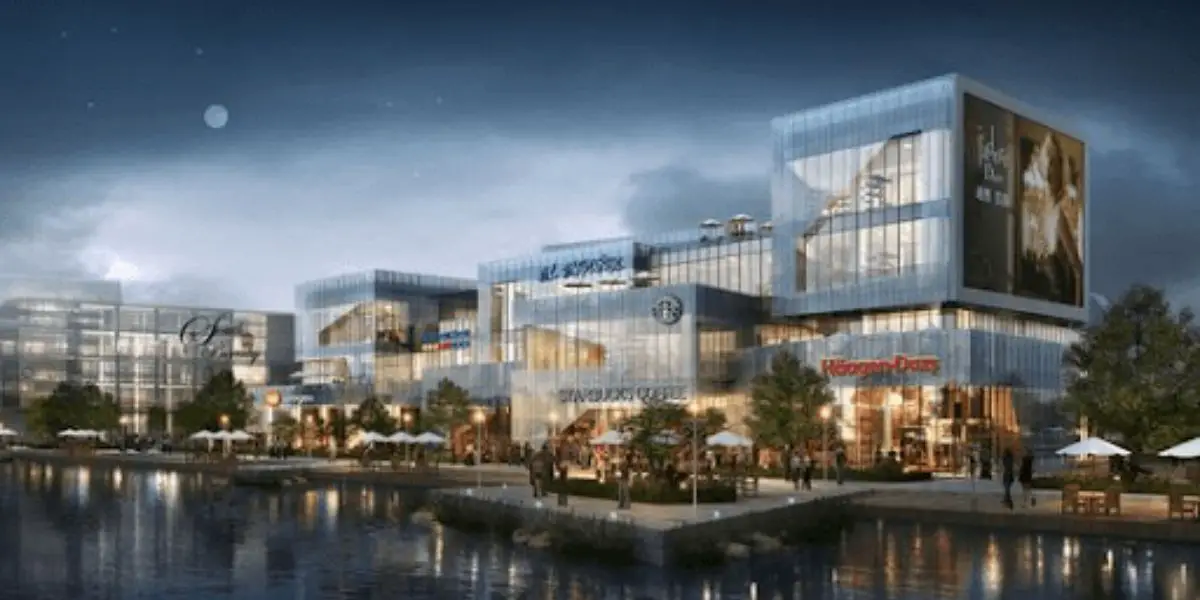Exterior design in architecture is invaluable. Not only does it serve as a visual expression, but it also plays a vital role in influencing environmental variables. A well-designed exterior can help to enhance the urban landscape, as well as complement the functions and aesthetics of a building. One of the most important aspects of exterior design is the choice of exterior paint, which can have a significant impact on the overall appearance and durability of a building.
To achieve a harmonious blend of form and function, architects and designers rely heavily on renderings. They are realistic visualizations of a building’s exterior created through a complex rendering process. The use of computer graphics has revolutionized the industry, offering many rendering methods to choose from. Essentially, rendering, as a noun, refers to the final image created by a rendering program. Through the use of various techniques, a photorealistic or stylized representation of the proposed design is created.
The emergence of modern visualization programs has allowed architects and designers to experiment with different materials, lighting, and landscape design elements. Ultimately, this allows them to create a coherent and visually appealing exterior that matches their vision. The use of visualization techniques not only elevates the design process but also ensures that the result is a masterpiece.
The 3D Rendering Process in Exterior Design

The process of 3D visualization in exterior design is an extremely multifaceted approach. It is a combination of creativity, technology, and skill to create visually captivating images of architectural concepts. This complex process can be broken down into several key steps.
Conceptualization
The path to creating a stunning final image begins with conceptualization. At this initial stage, architects and designers form a vision of the project, taking into account a huge number of factors. These include the function of the building, site constraints, and the desired aesthetic appearance. Using 3D exterior visualization services, professionals can effectively translate their ideas into a more tangible and realistic form. It sounds like magic, but the people who create it are already among us!
Modelling
The next stage of the process is modeling, where 3D artists create a digital representation of the building’s exterior. Using modern software tools, they carefully study the shape, size, and complex details of the building. Professionals in this field ensure that the resulting professional 3D renders are consistent with the design concept. High-quality 3D visualization is the result of accurate modeling, which lays the foundation for the next steps. It is the foundation of your project.
Applying texture and materials
Once the digital model is complete, 3D artists apply photorealistic textures and materials to the building’s surfaces. This stage is essential for creating impressive visualizations, as it helps to convey the visual appearance and tactile qualities of the selected materials. By carefully selecting and mapping textures, professionals ensure that their renderings evoke the desired look and feel.
Setting up lighting and environments
The final step in the 3D visualization process is setting up the lighting and environment. This step is crucial for creating professional visualizations because it accurately simulates the interaction of light, shadow, and reflections on the exterior surfaces of a building. 3D artists carefully design lighting systems and take into account environmental elements. These include landscape design and surrounding buildings. It is these details that give the design a sense of scale and context.
Once the lighting and environment are created, 3D artists move on to post-processing, which involves refining the visualization to improve colors, contrast, and other visual aspects. This stage ensures that the final good 3D renders meets the highest standards of quality and realism.
Advantages of Using 3D Rendering in Exterior Design
Architects and designers are changing the way they approach their projects thanks to the latest technologies, such as 3D visualization. By using 3D renders, this service offers numerous advantages that simplify the design process and improve the final result. Let’s take a closer look at the key benefits of incorporating 3D renders into 3D visualization.
Improved visualization and communication
3D visualization allows you to create realistic images of the exterior, which allow architects, designers, and clients to better understand the project. The ability to view the building from different angles, including bird’s eye view and close-ups, facilitates clear communication between all parties involved. Thanks to 3D modeling, design elements such as landscaping, site plans, and artificial lighting can be explored in real time. This qualitatively improves the result, allowing you to pay special attention to each aspect.
Improved design accuracy and efficiency
One of the main advantages of using 3D visualization in exterior design is the increased accuracy and efficiency of the design process. By creating a digital model, architects, and designers can examine every detail in more detail, identify potential problems, and make the necessary adjustments before construction begins. This helps to reduce the need for costly changes and modifications later. It also ensures the smooth implementation of the project from start to finish. In addition, 3D visualization can be a valuable asset in design competitions. This is because it allows professionals to present their concepts in a visually impressive and convincing way.
An effective marketing and presentation tool
In today’s competitive real estate market, high-quality visuals are essential to attract the attention of potential buyers and investors. This is where a 3D exterior rendering company can provide an invaluable service. They use advanced 3D visualization technology as an effective marketing and presentation tool that shows the exterior design of a building in the best possible light. By using realistic textures, landscape design elements, and artificial lighting, 3D artists can create compelling images, capturing the essence of the completed project.
3D visualization technology offers significant benefits in exterior design, from enhanced visualization and communication to increased accuracy and efficiency. Using this cutting-edge approach, professionals in the industry can create stunning visuals that not only impress clients and stakeholders but also contribute to the overall success of projects.
The Future of 3D Rendering in Exterior Design

The future of 3D visualization in exterior design is promising. More and more new opportunities are on the horizon. High-quality 3D visualizations are becoming more and more realistic thanks to the dedicated work of skilled 3D artists and the development of innovative tools.
Stunning-looking 3D renders will increasingly include amazing-looking renders, complex lighting, and well-integrated environmental elements. In the future, we can expect even more detailed landscape design, advanced post-processing techniques, and improved artificial lighting. Just imagine the breathtaking visual effects that await us!
The ability to create landscape designs and site plans with greater accuracy will become the industry standard. Bird’s-eye views and real-time 3D modeling will allow architects and designers to take a closer look at their projects, paying special attention to every detail.
As competition in design competitions grows, the demand for professional visualizations will increase. Stunning visuals will be a vital factor in ensuring success. Using the most advanced tools, 3D artists will continue to improve their skills, creating more realistic exteriors that captivate clients and stakeholders.
In conclusion, the future of 3D visualization in exterior design is bright, as evolving technologies allow architects and designers to create increasingly realistic and sophisticated visuals. As the industry embraces these advances, we can expect a new era of exceptional exterior design that pushes the boundaries of what is possible.
Conclusion
The impact of 3D visualization on exterior design is transformative and revolutionizes the way architects and designers approach their projects. Thanks to the use of advanced tools and techniques, professionals can create detailed site plans, realistic exteriors, and breathtaking visual effects. It is worth mentioning that all this is created in real time. This allows for a more detailed look at every aspect of the project, ensuring that special attention is paid to even the smallest details. As 3D modeling technology continues to evolve, we can expect its influence to grow, shaping the future of design competitions and the architecture industry as a whole.


